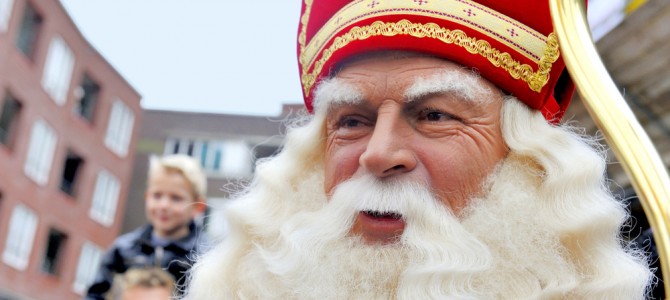In “Six Reasons to Lie to Your Kids About Santa Claus,” Rich Cromwell had me at number six, essentially G.K. Chesterton’s idea that Santa Claus is fun and wonderment secretly doing the work of Christianity. Cromwell’s other reasons are good too—for instance, silly lying to kids can be fun and adults tend to take the need for constant literal truth too seriously. (Of course, our obsession with relentless realism probably grows out of the erosion of trust in the breakdown of families, that is, it is a simpler thing for married moms and dads to make up stories about bedtime velociraptors when the kids can easily draw the line between truth and teasing. For fractured families, the issue can be a little more complicated. But that is a more depressing topic than I want to put before anyone on Christmas.)
I think, however, that Cromwell missed a seventh reason to lie to your kids about Santa Claus, one that I discovered when I faced explaining the truth about Santa to my eldest children.
Nicholas was a saint in the third century. His reputation for helping children grew from a decently historically verified story in which he provided the gold for some poor sisters’ dowries and thereby saved them from the sex-slave trade. There is also another, less-verified story of him raising some boys from the dead after an innkeeper hacked and pickled them.
Throughout the centuries St. Nicholas’s legend grew, and various versions of Saint Nicholas brought gifts to children on his day, December 6. Later, the gift giving moved to Christmas Day, with baby Jesus getting an assist from Saint Nicholas, until eventually the North American standard version of Santa Claus emerged out of the famous nineteenth-century poem, “‘Twas the Night Before Christmas.” I’m glossing over quite a bit of fascinating history to get to my point: by legend grown out of original events, St. Nicholas serves children. He brings them joy. And when we adults play Santa Clause, we emulate his giving spirit.
So when my husband and I told our eldest children this as they learned the truth about the factory at the North Pole and the sled pulled by flying reindeer, they didn’t despair or immediately switch to asking us directly for gifts. They offered to become midnight elves. They take as much joy from setting the room for their baby sisters and younger cousins as they did springing out of bed a first light. My husband and brother are thankful, as I have a terrible habit of purchasing items with instruction descriptions like “approximately 45 minutes to assemble,” which never take a mere 45 minutes to assemble. (We have a tree house dollhouse that still makes my husband flinch.) Also, this Christmas giving spirit extends to helping me keep up with moving a certain annoying toy around each night. My mother gave the children their Elf on the Shelf the first year it came out (overachieving grandmother, she is) and I have never gotten the hang of the creature. My son and daughter, however, have, which makes me a very grateful mother.
So the seventh reason to lie to your kids about Santa Claus: We carry on the work St. Nicholas inspired us to do. In a sense, St. Nicholas does exist. His generous spirit lives on in each of us who chooses to honor his legend.








